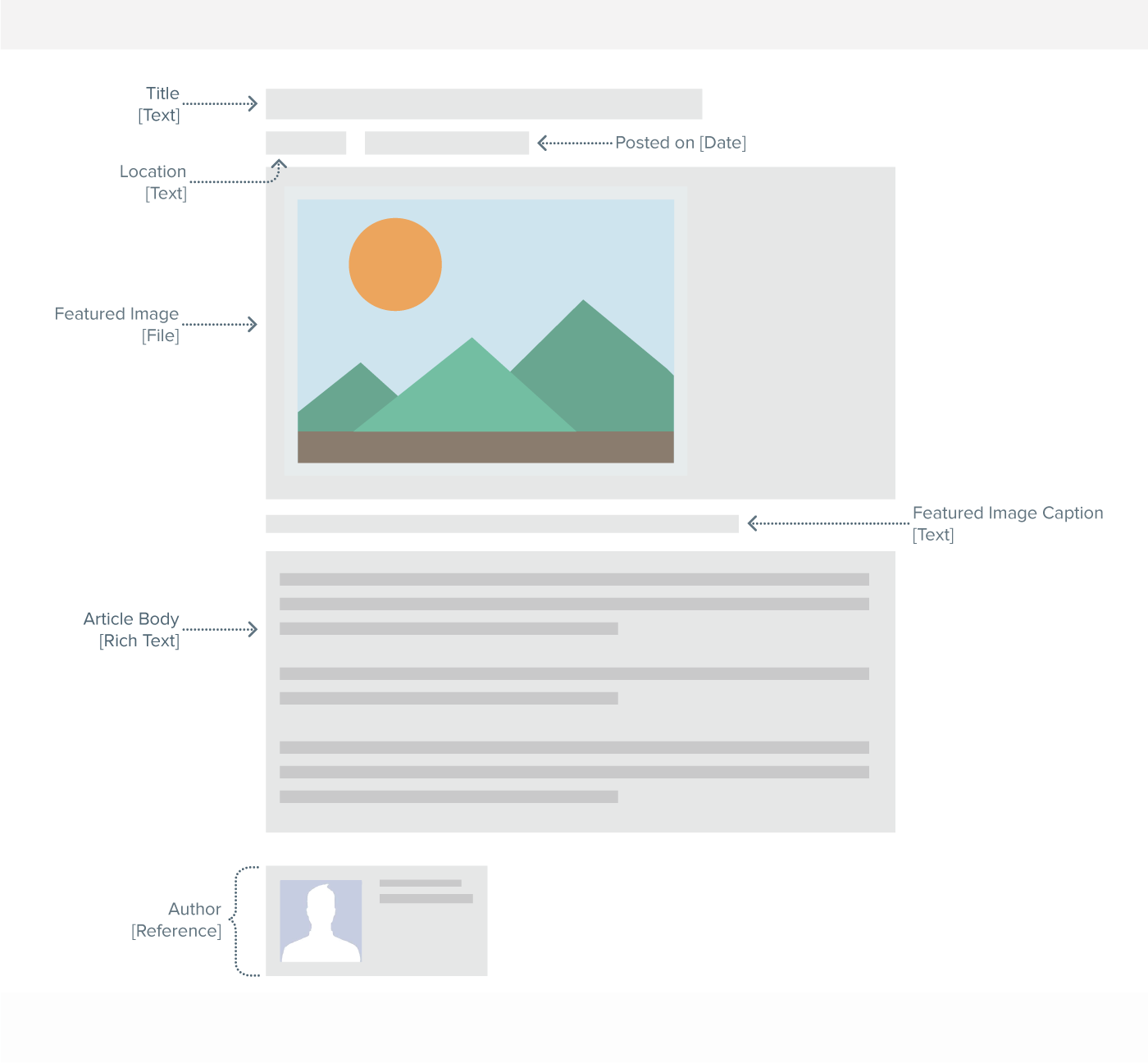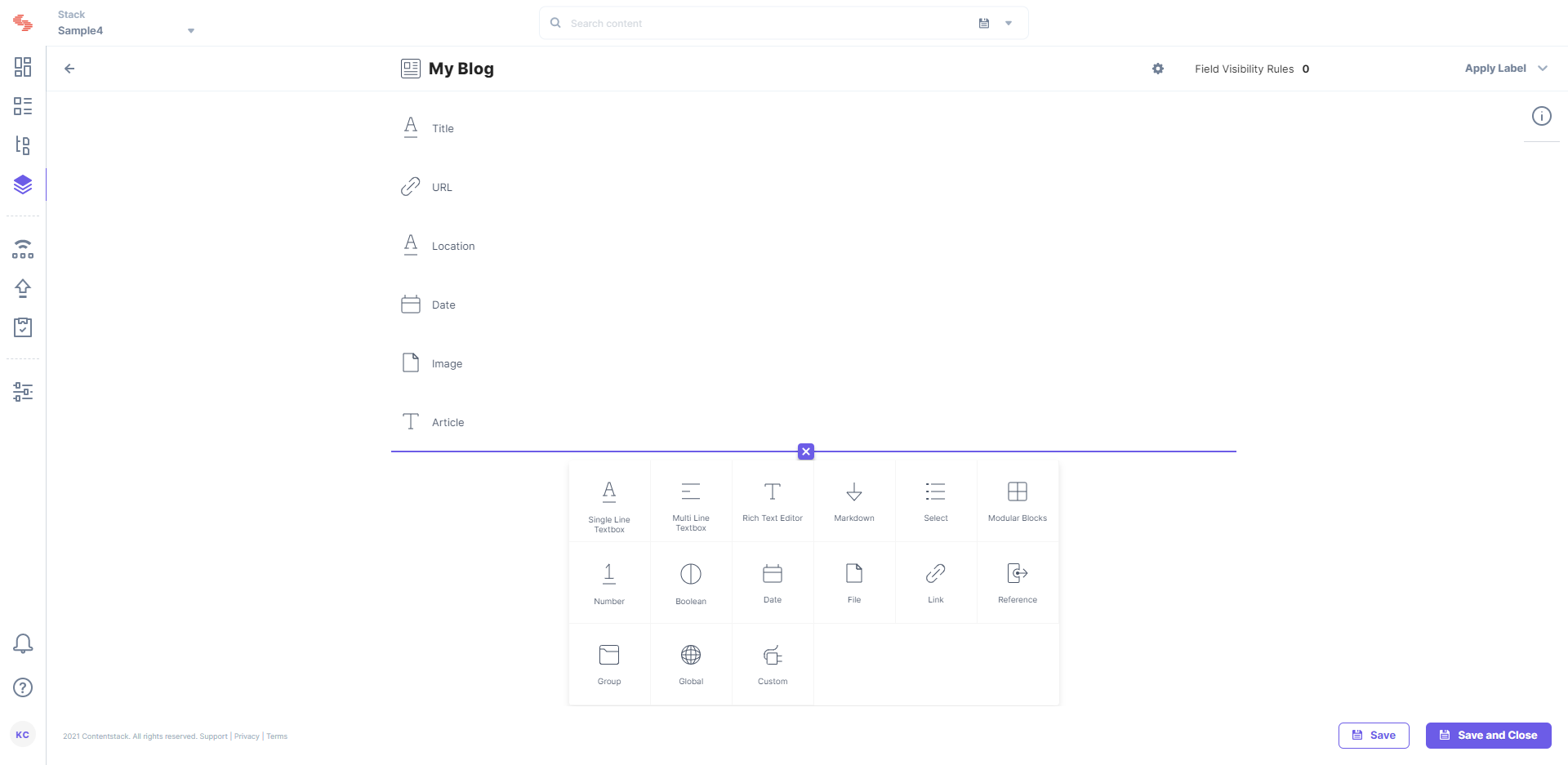Was this article helpful?
Thanks for your feedback
Content modeling helps you determine and create just the right content type that suits your needs.
Content modeling means defining the structure of your content at a granular level. It involves:
The process of modeling content in Contentstack begins as soon as the designs (or even design wireframes) are finalized. Based on the designs, site managers/developers need to identify the structure of content types that need to be created in Contentstack. Developers can then start by actually creating the content type by adding relevant fields.
Since the process of content modeling begins at the design stage, any minor (and indeed, major) errors made while modeling will be reflected on the actual structure of your web/app page. It is therefore recommended that content modeling should not be skipped and should be done accurately.
Each section/component of your website or mobile app should have an appropriate content model in place. Content types, and thus the actual content, should then be created accordingly for each component. In the next section, we will understand the process of creating a robust content model and look at how to create one.
Let's look at each of the steps briefly.
Additional Resource: We've collated some content modeling best practices that you can refer to while building your content types.
Note: Create an SEO Global Field for SEO Tags as a recommended best practice. Please refer to the Global Field Use Cases documentation for more information.
Note: For the new UI, you no longer have to choose between the “Webpage” and “Content Block” options. For more details, refer to the Optional URL field section in the Introducing the New Contentstack document.
We will look at an example to understand content modeling better. Let's assume that you own a new website and wish to post new articles to it regularly. We will follow the steps given above to develop a content model for the news article page.
Analyzing requirement
The news article page should contain a headline, date, location, image, body text, and author's name. Let's assume that the structure of the news article that you have in mind is similar to the article given below:
Identify structure
Let's identify the fields you need to add to build a content type to create the page shown in the above step.
Develop content type
This content type will be used to create multiple new articles. Hence, the content type should be of the "Multiple" type. Then, add all the required fields to the content type. The fields' names can be changed by editing their properties.
This creates your “News Article” content type. You can even set Labels to the content type and add Field Visibility Rules to control the display of fields. In addition, you can add a Global Field that can act as an SEO field in your content type. Having an SEO field in your content type (within the entry) can enhance your search results and drive traffic to your website. Now, you can start creating entries for it.
Additional Resource: To know more about adding entries to your content type, go through our extensive guide that lets you create and manage your content.
Was this article helpful?
Thanks for your feedback